Tamron 25-200mm f/2.8-5.6 Di III VXD G2 Review: Travel Light
Tamron has a long and illustrious history of making travel-zoom lenses with massive focal ranges. These lenses provide a maximum amount of convenience, but how much of a compromise needs to be sacrificed to make this all possible? The new $900 Tamron 25-200mm f/2.8-5.6 Di VXD G2 is set to make a mark on the travel-zoom industry.
On a recent trip to Japan, I had an opportunity to review the Sigma 20-200mm f/3.5-6.3, which does sacrifice some light gathering to provide a staggering wide-angle range with plenty of optical performance. I love this lens, but Tamron’s new option is a natural competitor for anyone using an E-mount body. Not only will I review the 25-200mm f/2.8-5.6 Di VXD G2 lens here, but I will also provide my feedback on how it compares to the Sigma 20-200mm lens throughout.
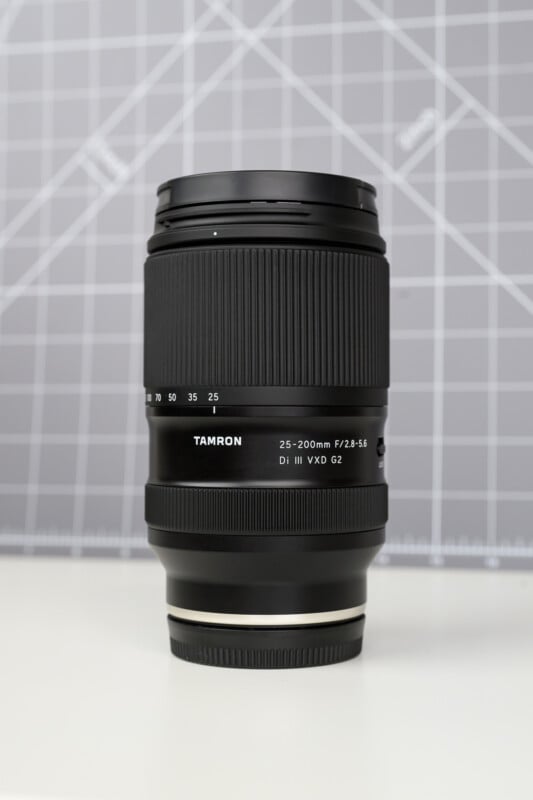
Tamron 25-200mm f/2.8-5.6 Di III VXD G2 Review: How It Feels
The Tamron is a very compact lens with a 67mm filter diameter and easy-to-carry dimensions. It weighs only 575 grams, which makes it very similar in size and weight to the Sigma lens.
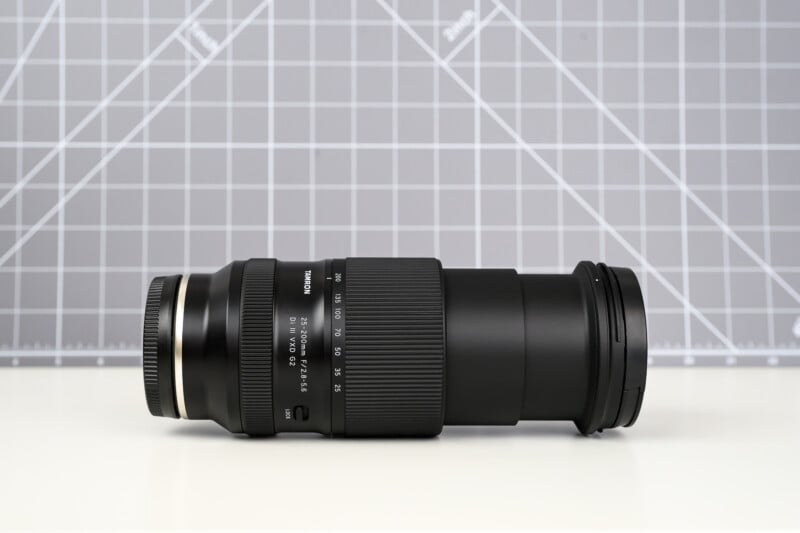
There is a basic zoom ring on the Tamron, with a locking switch to keep it from extending past the 20mm mark. I like the locking option to prevent lens creep — gravity cannot extend the barrel of the lens while wandering around. However, this switch has to be fully disengaged before zooming the lens, which is in contrast to Sigma’s option, which has a locking switch that can be easily bypassed simply by zooming the lens with a small amount of force.
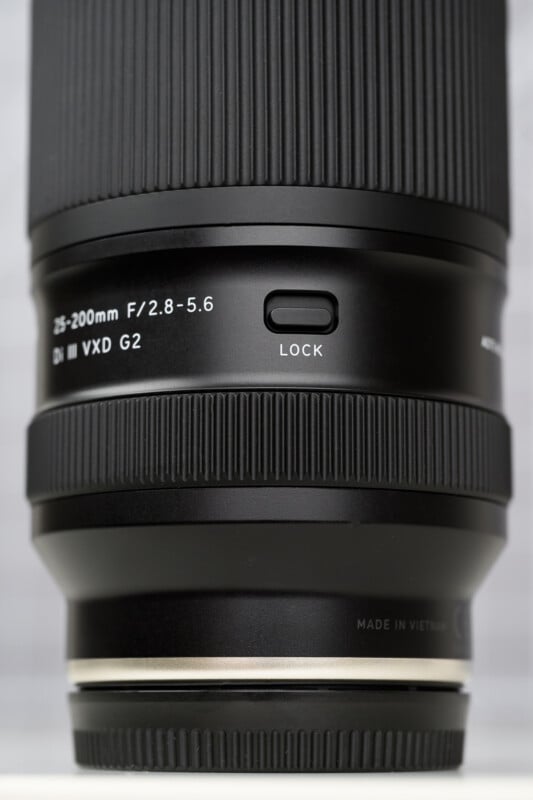
Otherwise, the Tamron is quite basic. There is a manual focus ring (which I wish had more resistance), but no AF/MF selector switch to be found. Changing the focus within the body is no big deal, but when I was using the macro functionality, I liked being able to quickly change focusing modes with the selector switch on the Sigma 20-200mm. There are no other controls to be found on the Tamron lens, but it does have a USB-C port to allow firmware upgrades. The lens is also well-sealed against the elements.
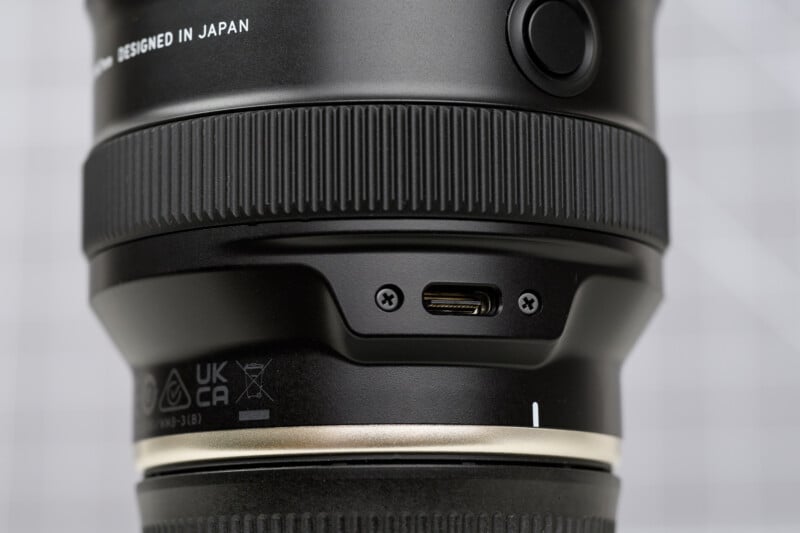
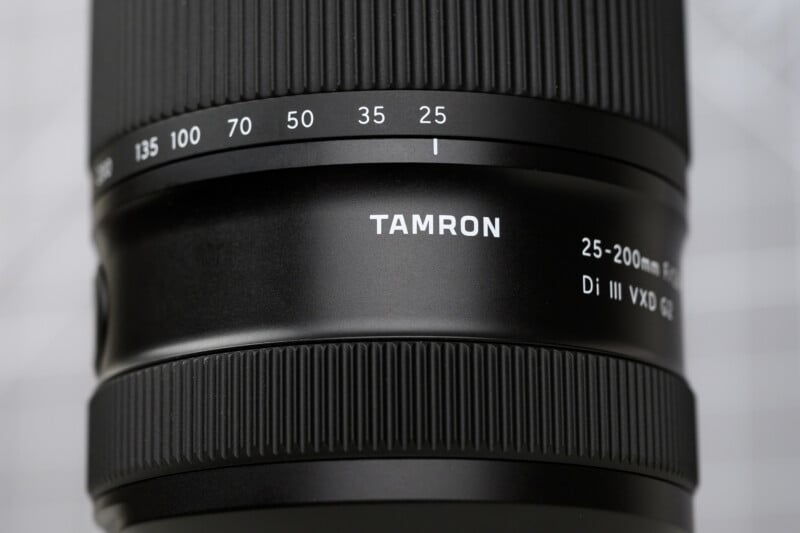
Tamron 25-200mm f/2.8-5.6 Di III VXD G2 Review<: How It Shoots
The optical formula required to facilitate the vast focal range is going to be complex, and this can often cause issues with internal reflections and flare. However, the Tamron 25-200mm did a great job of resisting flare issues, instead providing good contrast when shooting towards bright lights. There is some minor ghosting, which is only apparent when stopping the lens down, and I found the Tamron to be superior to the Sigma in this regard.

![]()
![]()
The autofocus performance is impressive thanks to a VXD, voice-coil, linear motor. I had no issues acquiring and maintaining tracking focus on the Sony a7R V I tested it with. The speed and smoothness with which the Tamron can focus should be ideal for most users.

![]()
![]()
This lens has some good sharpness characteristics throughout its zoom range. Center sharpness at the 25mm end is impressive, with good detail and contrast at f/2.8. Stopping down the lens brought about a little more contrast, but the result is pretty similar overall. When looking side by side at the Tamron at 25mm and the Sigma at 20mm, the sharpness was basically identical.
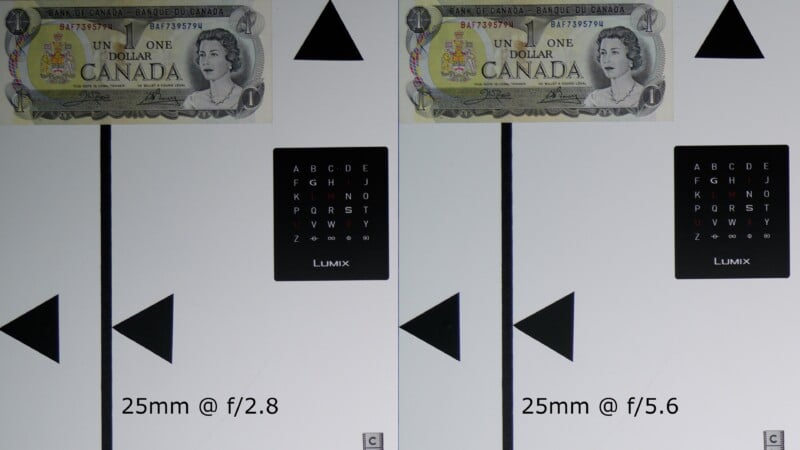
![]()
At 200mm, the Tamron has good sharpness in the center at f/5.6, and there is a noticeable improvement when stopping down the lens slightly. However, the corners have a little bit of blur to them regardless of the aperture chosen. I still think the performance at 200mm is good, and I enjoyed the look of the photos that I took with it.
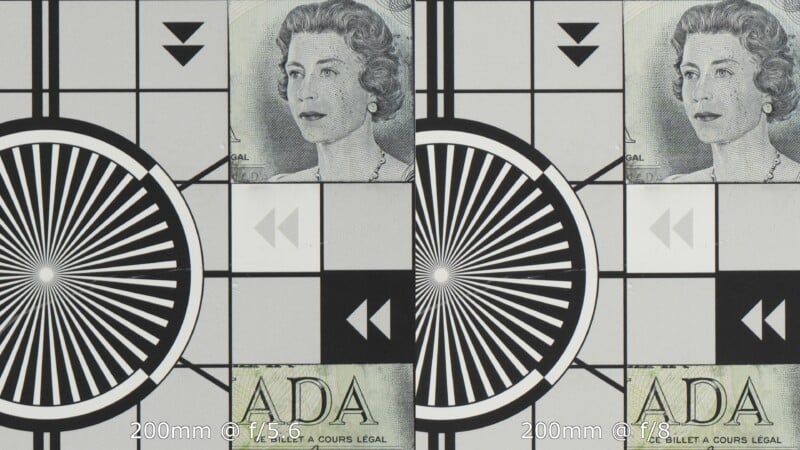
![]()
Corner sharpness doesn’t play that big a part when shooting wildlife or sports at 200mm. I do have to mention, though, that the Sigma is even more consistent at 200mm, with excellent sharpness throughout the telephoto range and better corner sharpness.
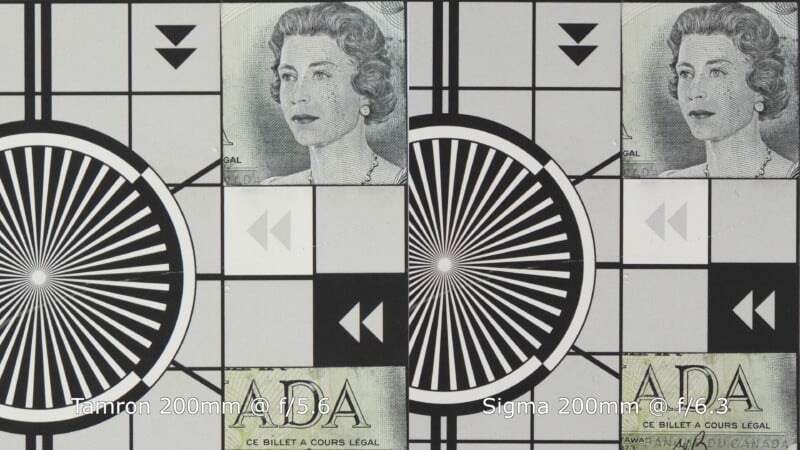
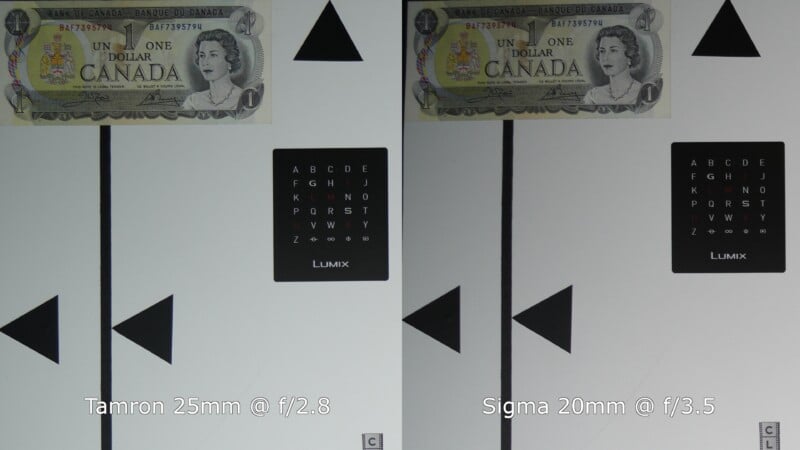
The versatility of the Tamron lens is further enhanced with a macro capability that brings 1:1.9 reproduction at the 25mm end. This semi-macro performance is great to have for the occasional close-up shot; however, the working distance between the subject and the lens is quite poor. The front element is millimeters away from the subject, and the lens itself blocks a ton of light. Zooming the lens to the telephoto side will give back useful working distance, but the reproduction capability isn’t close to macro anymore.

![]()
![]()
The Sigma has an obvious advantage when it comes to close-up shots because it has the exact same macro capability, but it can provide this same ability anywhere from the 28mm mark to the 85mm mark. This means I can get the wide-angle macro look if I want it, but also get far more working distance while still maintaining the same macro capability by pushing to 85mm. Both lenses lack any sort of image stabilization, so there is no obvious difference in stability either way.
![]()
![]()
The major advantage that the Tamron has over the Sigma is its faster aperture range. The f/2.8 to f/5.6 range provides anywhere from 1/3 to 2/3 improvement over the Sigma lens at similar focal lengths. This gives the Tamron slightly faster shutter speeds throughout the range, and also the potential for shallower depth of field.
The Sigma 20-200mm lens has rather pedestrian-looking bokeh, with a harsh overall look to out-of-focus areas. Perhaps Sigma decided not to improve the look of the bokeh because the lens so often has expansive depth of field anyway, given its slow aperture range. The Tamron lens has a smoother look to its specular highlights with a softer transition across the plane of focus. Soft backgrounds also look more pleasant, and highlights are smooth and round in shape.

![]()
![]()
Tamron 25-200mm f/2.8-5.6 Di III VXD G2 Review: Second Fiddle
If you were to evaluate the Tamron in a vacuum, so to speak, I would say it produces good optical performance for such a handy and versatile travel lens. The 25mm to 200mm zoom range is ideal for a walk-around lens that can handle any travel photography situation. It is also such a compact and handy optic if you only want to leave the house with one lens, and provides enough light to get by in darker conditions.
![]()
When comparing the two lenses, however, the Sigma has a lot going for it. The macro capability and wider 20mm advantage are very handy when looking at any landscape or travel situations. I found the Sigma to be slightly sharper, and the overall dimensions are essentially identical. I also appreciated the extra controls on the Sigma lens and better manual focusing experience. In most situations, I would probably choose the Sigma over the Tamron when recommending a travel-zoom lens, given its superior overall versatility. However, if flare resistance, bokeh, and a little extra light are more important to you, the Tamron 25-200mm lens will not disappoint.
![]()
Are There Alternatives?
The Sigma 20-200mm is obviously a competitor that trades less light-gathering capability for more versatility. The previous 28-200mm f/2.8-5.6 is an option, but the G2 version has a more usable wide-angle and an attractive $900 price.
Should You Buy It?
Yes. This is a versatile and useful lens, capable of excellent image making. However, the Sigma 20-200mm could likely be the better choice.